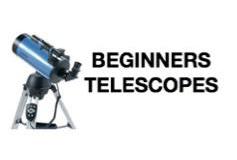

Lens care is quite simple and can be summed up in five easy steps. Proper lens care is crucial to getting the most satisfying long-term use from your Celestron telescope. It also means that you will be buying a longer telescope and may have trouble transporting your scope to your observation point. Frequently, it means you will get the best image for the money spent. The focal length is the distance from the main lens to where the light converges to focus.Ī higher focal ratio doesn’t necessarily mean a higher quality image. You can calculate a telescope’s focal ratio by dividing its focal length by its aperture size. TELESCOPE FOCAL RATIO:įinally, we come to the focal ratio of a telescope. With a reflector, it refers to the diameter of the objective mirror. With refractor telescopes, it refers to the diameter of the objective lens. Aperture size describes one of two things, depending on the type of telescope you buy. Since light is the true key to a telescopes power to observe, the size of its aperture is key to better images. The aperture size determines a telescope’s ability to gather light. TELESCOPE APERTURE SIZE:Īfter that long dissertation on eyepieces, you might think there is nothing left to know about a telescope! You have to know about the aperture size, though. To recap: lower magnification eyepieces make it easier to find and keep objects in view and require less light, so it is easier to view dimmer objects. Additionally, you must keep in mind that higher magnification eyepieces require more light to provide a clearer image. You will get a better view of a smaller area, but will have trouble viewing a larger object such as a nebula or cluster.Īnother factor to consider is that it can be difficult to keep an object within the sight field of your telescope with a higher magnification eyepiece unless you are using a motorized mount. It may sound as if you will get the best view of an object with a high power telescope with a higher magnification eyepiece, but that is a tad misleading. with smaller numbers indicating higher magnification. a 10 mm eyepiece will offer a higher magnification than a 25 mm eyepiece. Smaller numbers offer higher magnification, i.e. An eyepiece for a telescope is rated in millimeters (mm).

Every telescope will be equipped with at least one eyepiece.


 0 kommentar(er)
0 kommentar(er)
